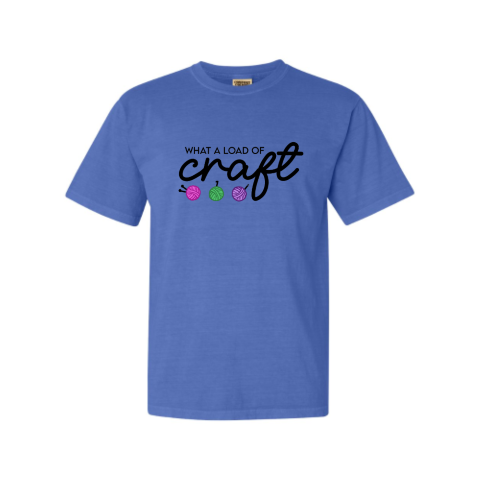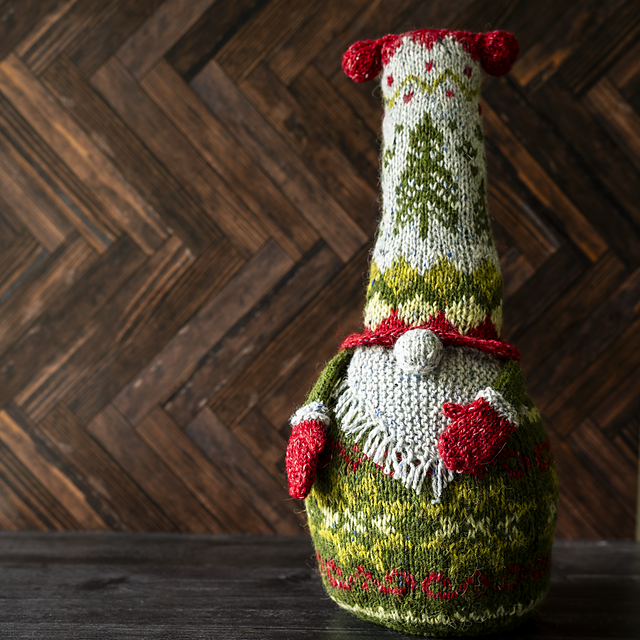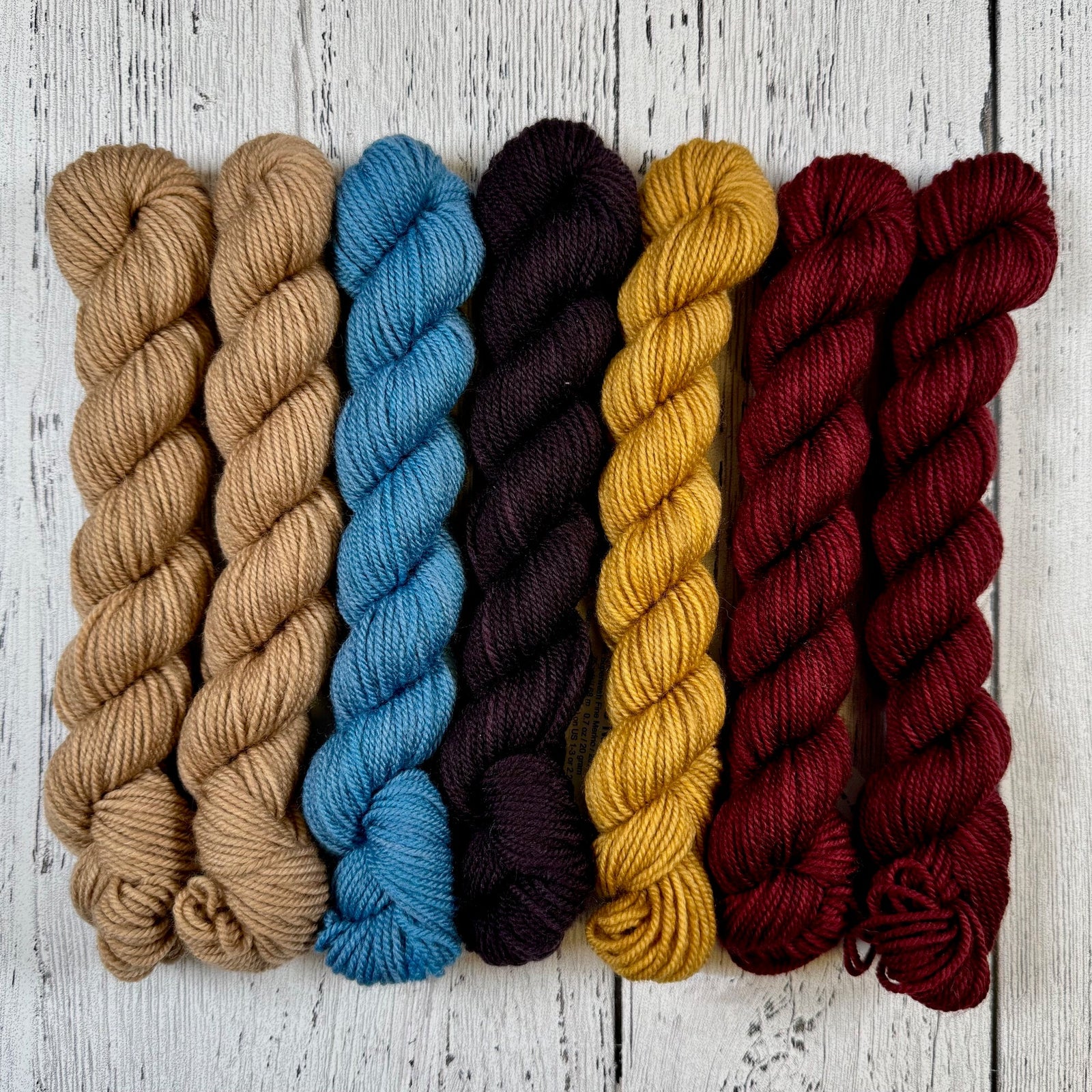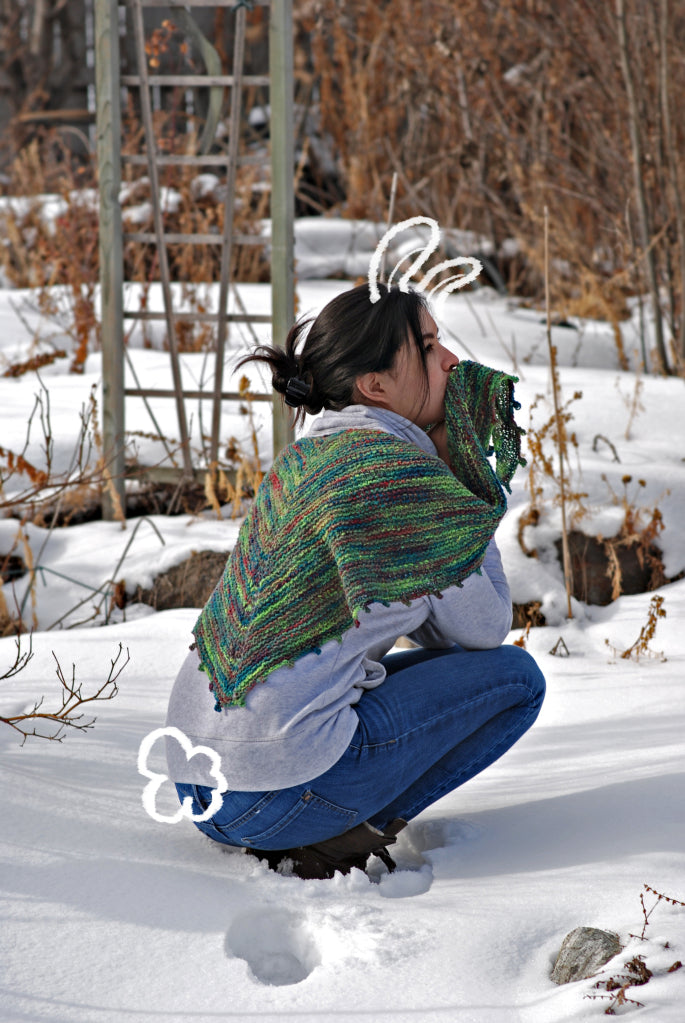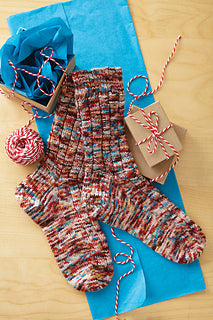Barb Brown is our resident design coordinator and all-around knitting expert. She will be sharing her knowledge with our blog readers in a series we’re calling Behind the Brain of Barb– we hope you enjoy this inaugural post to kick things off!
Fringe. It is back and is being seen more and more on the runways, as well as in the “off the rack” collections. When I first read this, I was thinking flash back/retro 60s and 70s. But in many cases, it isn’t! It’s often a perfect finishing touch, or used in a new and different way from the last time we saw it trend. More designers using fringe to embellish asymmetric ponchos, the hems of skirts, and even handbags. Unlike the 60s and 70s, when fringe was often just an afterthought, designers are using it in sometimes unique ways to enhance a design element or to bring out a certain shade in painted yarn or colour patterning.
Some good examples of this trend:
In the Tiny Mouse Scarf by Kathy Perry, a fringe is used to enhance the appearance of the stripes, and to draw your eye to the tiny mouse that can be hidden in the pocket of the scarf.
 On the Whiskers and Fringe neck warmer by Kathy Perry, the fringe adds some “punch” to the cat theme, carrying on the theme of the whiskers in the main stitch.
On the Whiskers and Fringe neck warmer by Kathy Perry, the fringe adds some “punch” to the cat theme, carrying on the theme of the whiskers in the main stitch.
 And again here, on the Cat and Mouse Hat by Kathy Perry, the fringe is used in a bowtie fashion to evoke the cat’s whiskers, and give a contrast to the smooth little mouse and the round pompom on the ties.
And again here, on the Cat and Mouse Hat by Kathy Perry, the fringe is used in a bowtie fashion to evoke the cat’s whiskers, and give a contrast to the smooth little mouse and the round pompom on the ties.
 Another design element that (to me) falls in the fringe category is the tassel. Here, on the Scottie Scarf by Liz Lovick, (coming soon!) it adds a touch of haute couture, and also helps to give some weight to the ends of the scarf so that it hangs and drapes in a lovely way.
Another design element that (to me) falls in the fringe category is the tassel. Here, on the Scottie Scarf by Liz Lovick, (coming soon!) it adds a touch of haute couture, and also helps to give some weight to the ends of the scarf so that it hangs and drapes in a lovely way.
Applying fringe is fairly quick and easy! First, decide approximately how long the fringe should be, and how lush. Most fringe is made using a double strand of the yarn, but singles and triples can be used for a different look. Experiment a little! Once the length has been decided, find something that is about the same measurement, such as a book, cd case, etc. Wind the yarn around this…but don’t wind too much at once! It will be difficult to cut, and the length of each piece will become distorted.
Cut through the yarn on one side. There are now a group of pieces of yarn, already folded in half, and close to the same length. Keeping them folded in half (and using 1, 2 or 3 strands depending on the look) pull them through the edge of the knitting, and pass the loose ends through the loop formed and snug it up. Continue until you are satisfied with the look. The ends will likely not be entirely even. This can be desirable in some cases. But for a nice even edge, try this trick: find a dining table that expands. There will be that crack down the middle. Measure from the crack to the point on the table that is the length of the desired fringe. Use painters tape (which won’t leave a mark) to mark a line. Line up the edge of the item to this tape, and smooth the fringe down to that crack. Place a weight (books work very well!) on the item to stop it from sliding. Now, run your scissors along the crack, trimming the fringe where necessary. And do remember, fringe does use a surprising amount of yarn!
Have some fun with fringe! Use it unexpected ways such as by adding your leftovers from another project, or mix and match yarn colours and styles and weights. And do send us pictures of your results, we love to see what you are doing!
 Barb Brown comes from a family of knitters and has been knitting since the age of 5. Her Great Grandma was Jeremina Colvin, the Shetlander who helped the Cowichan ladies develop a market for their high quality sweaters. She loves to share her love of knitting through teaching and designing, both of which she has been doing for the last 30 years. Her first published design appeared about 14 years ago, and her work has appeared in countless publications such as Vogue Knitting, Knit Simple, The Knitter, and Yarn Forward – and, of course, right here at Ancient Arts Yarn! Her book Knitting Knee-Highs: Sock Styles from Classic to Contemporary came out in 2011, and she has contributed to many other popular titles, the most recent being Lace Yarn Studio by Carol Sulcoski, Mini Skein Knits: 25 Knitting Patterns Using Small Skeins and Leftovers from Lark Crafts, and Wrapped in Color: 30 Shawls to Knit by Maie Landra and Taiu Landra. You can see all of Barb’s designs here on Ravelry.
Barb Brown comes from a family of knitters and has been knitting since the age of 5. Her Great Grandma was Jeremina Colvin, the Shetlander who helped the Cowichan ladies develop a market for their high quality sweaters. She loves to share her love of knitting through teaching and designing, both of which she has been doing for the last 30 years. Her first published design appeared about 14 years ago, and her work has appeared in countless publications such as Vogue Knitting, Knit Simple, The Knitter, and Yarn Forward – and, of course, right here at Ancient Arts Yarn! Her book Knitting Knee-Highs: Sock Styles from Classic to Contemporary came out in 2011, and she has contributed to many other popular titles, the most recent being Lace Yarn Studio by Carol Sulcoski, Mini Skein Knits: 25 Knitting Patterns Using Small Skeins and Leftovers from Lark Crafts, and Wrapped in Color: 30 Shawls to Knit by Maie Landra and Taiu Landra. You can see all of Barb’s designs here on Ravelry.

